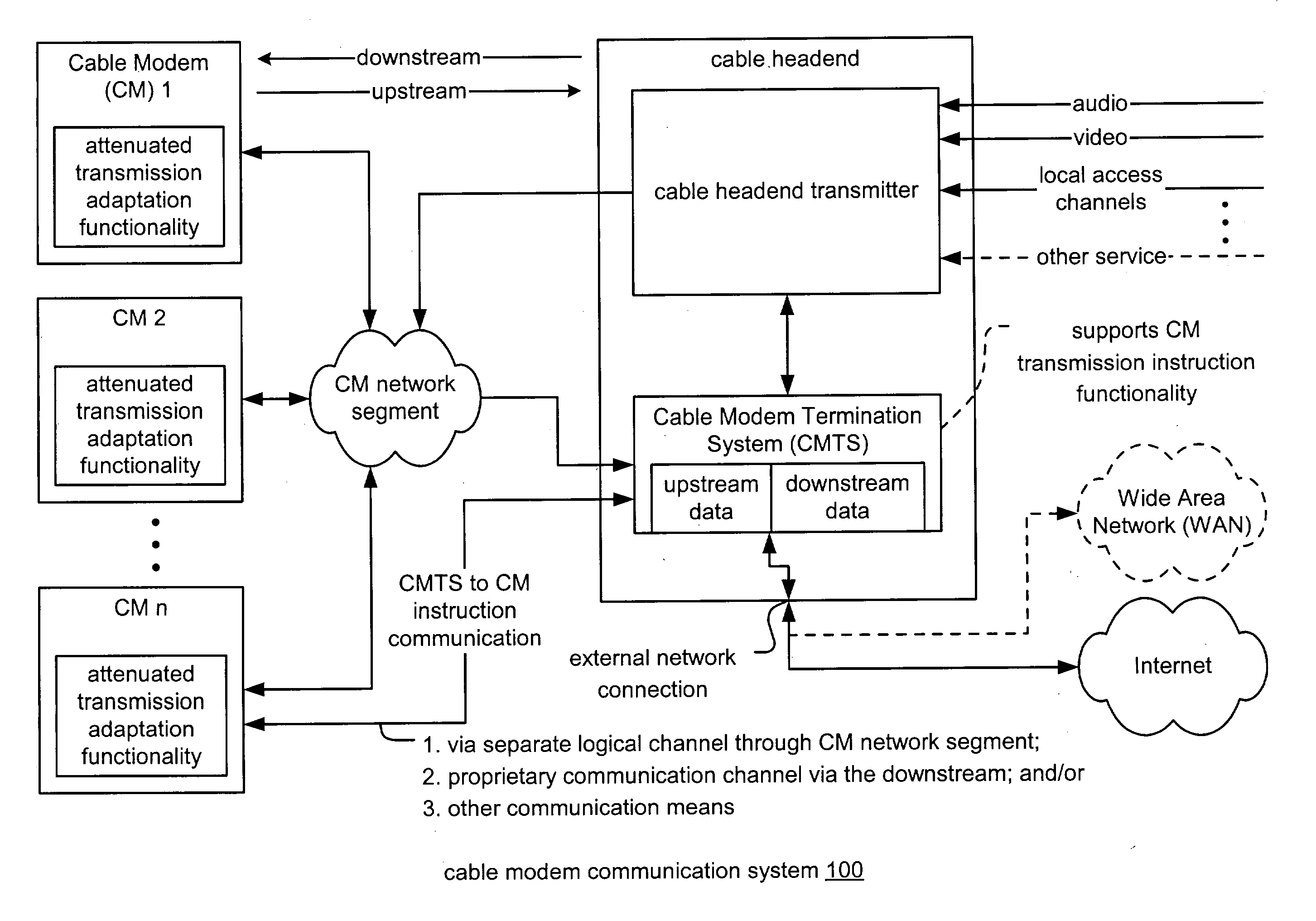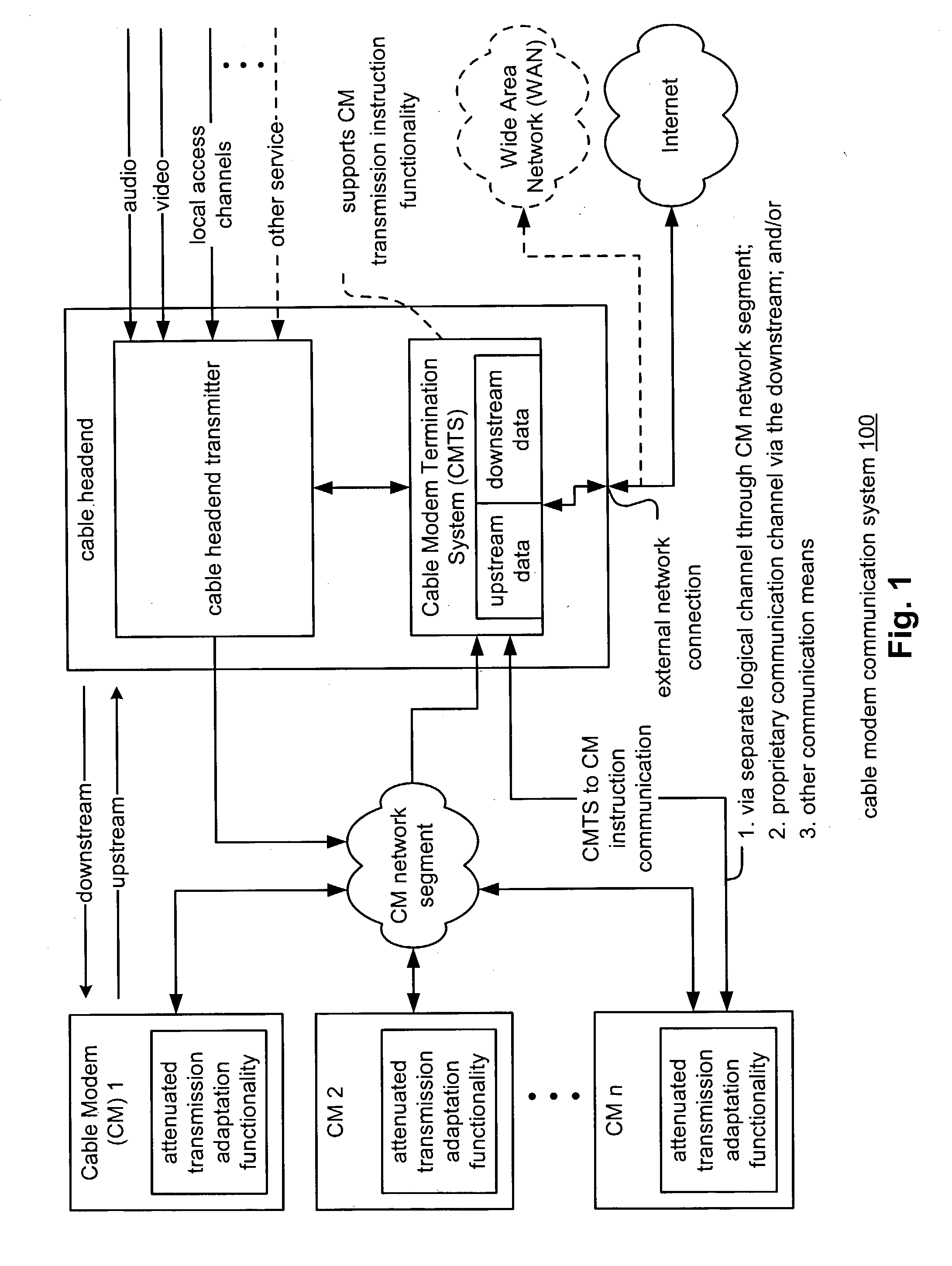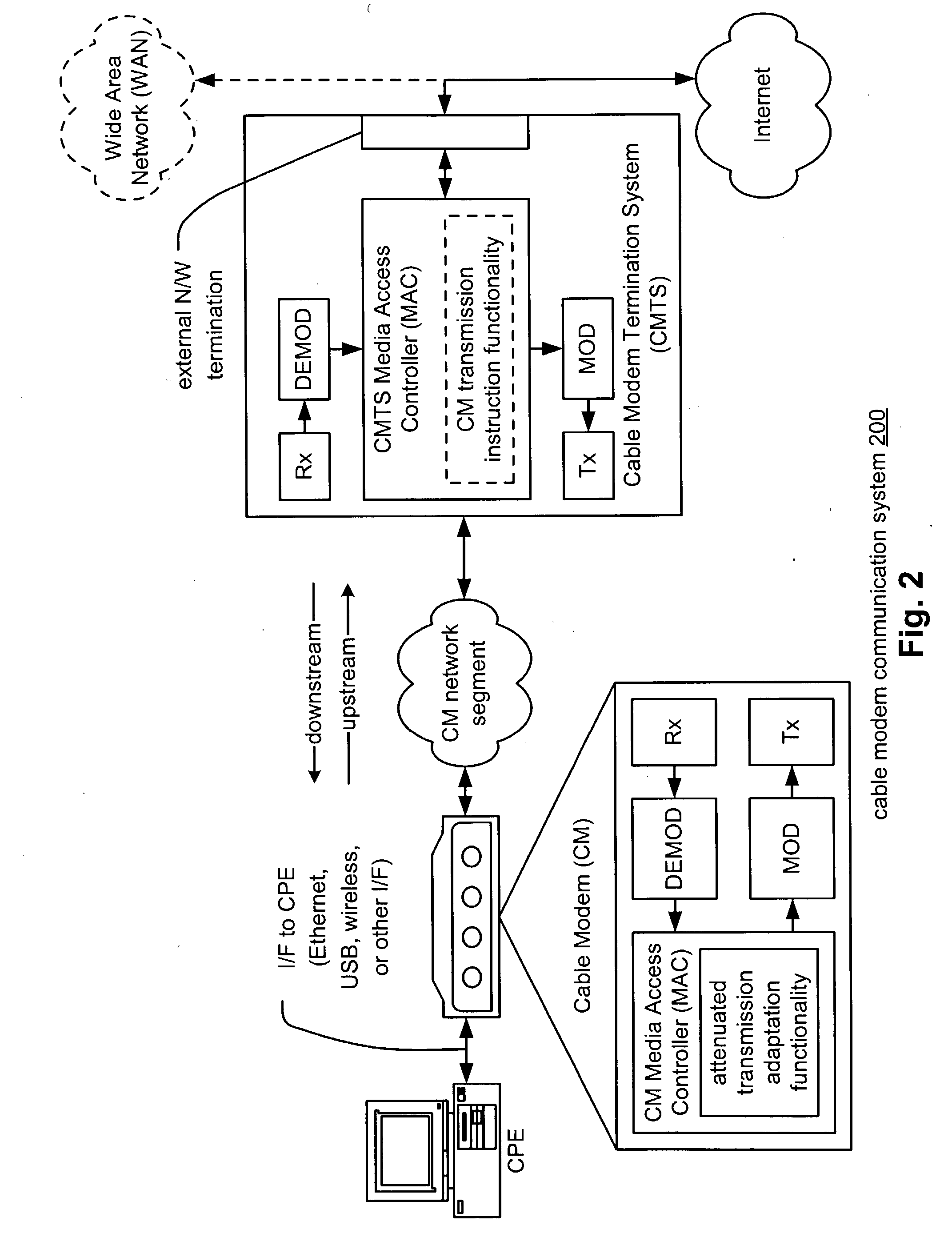Signal processing under attenuated transmission conditions
a transmission condition and signal processing technology, applied in the field of communication systems, can solve the problems of undesirable attenuation of signals, transmission signals that may experience a large attenuation of transmitted signals, and transmission systems that have been attenuated for a long time, so as to achieve the effect of maintaining throughput and efficiency
- Summary
- Abstract
- Description
- Claims
- Application Information
AI Technical Summary
Benefits of technology
Problems solved by technology
Method used
Image
Examples
Embodiment Construction
[0060] Various aspects of the invention address the many deficiencies of the prior art when dealing with a large attenuation in the path from a transmitter to a receiver. The invention is able to provide, among other benefits, a solution that allows optimal use of bandwidth within a communication system. In the presence of insufficient SNR, a transmitter may reduce its throughput or bits per second, (and thus attempt reliable communications) in either of two ways: by reducing its constellation order, for example, from 64 QAM to QPSK, or by reducing the bandwidth—or number of signaling dimensions per time interval—that it employs.
[0061] Reducing constellation order (bits per symbol) decreases the SNR required at the receiver for reliable communications. However, by doing so, it also reduces the throughput efficiency (bits per second per Hertz (Hz)) of the overall communications channel. This may be problematic, in that, the PHY operational parameters are typically shared among ALL o...
PUM
 Login to View More
Login to View More Abstract
Description
Claims
Application Information
 Login to View More
Login to View More - R&D
- Intellectual Property
- Life Sciences
- Materials
- Tech Scout
- Unparalleled Data Quality
- Higher Quality Content
- 60% Fewer Hallucinations
Browse by: Latest US Patents, China's latest patents, Technical Efficacy Thesaurus, Application Domain, Technology Topic, Popular Technical Reports.
© 2025 PatSnap. All rights reserved.Legal|Privacy policy|Modern Slavery Act Transparency Statement|Sitemap|About US| Contact US: help@patsnap.com



